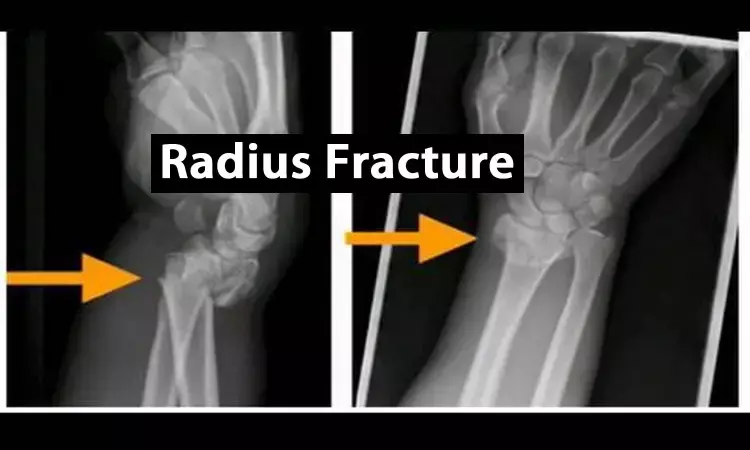- Home
- Medical news & Guidelines
- Anesthesiology
- Cardiology and CTVS
- Critical Care
- Dentistry
- Dermatology
- Diabetes and Endocrinology
- ENT
- Gastroenterology
- Medicine
- Nephrology
- Neurology
- Obstretics-Gynaecology
- Oncology
- Ophthalmology
- Orthopaedics
- Pediatrics-Neonatology
- Psychiatry
- Pulmonology
- Radiology
- Surgery
- Urology
- Laboratory Medicine
- Diet
- Nursing
- Paramedical
- Physiotherapy
- Health news
- Fact Check
- Bone Health Fact Check
- Brain Health Fact Check
- Cancer Related Fact Check
- Child Care Fact Check
- Dental and oral health fact check
- Diabetes and metabolic health fact check
- Diet and Nutrition Fact Check
- Eye and ENT Care Fact Check
- Fitness fact check
- Gut health fact check
- Heart health fact check
- Kidney health fact check
- Medical education fact check
- Men's health fact check
- Respiratory fact check
- Skin and hair care fact check
- Vaccine and Immunization fact check
- Women's health fact check
- AYUSH
- State News
- Andaman and Nicobar Islands
- Andhra Pradesh
- Arunachal Pradesh
- Assam
- Bihar
- Chandigarh
- Chattisgarh
- Dadra and Nagar Haveli
- Daman and Diu
- Delhi
- Goa
- Gujarat
- Haryana
- Himachal Pradesh
- Jammu & Kashmir
- Jharkhand
- Karnataka
- Kerala
- Ladakh
- Lakshadweep
- Madhya Pradesh
- Maharashtra
- Manipur
- Meghalaya
- Mizoram
- Nagaland
- Odisha
- Puducherry
- Punjab
- Rajasthan
- Sikkim
- Tamil Nadu
- Telangana
- Tripura
- Uttar Pradesh
- Uttrakhand
- West Bengal
- Medical Education
- Industry
Operative treatment preferred choice for distal radius fractures: JAMA

Researchers have found in a meta analysis that operative treatment might be the preferred treatment option for the most common injury among adults. The Study revealed that operative treatment of distal radius fractures improved the medium-term Disabilities of the Arm, Shoulder, and Hand (DASH) questionnaire score and grip strength over nonoperative treatment in adults.These findings suggest that operative treatment might be preferred for distal radius fractures.
The study has been published in JAMA Network Open.
The researchers conducted the meta analysis to ascertain outcomes associated with operative vs nonoperative treatment of distal radius fractures in adults.
Researchers at the Department of Orthopedic Surgery at Harvard Medical School Orthopedic Trauma Initiative, searched PubMed/MEDLINE, Embrase, CENTRAL, and CINAHL databases from inception to June 15, 2019 for studies that compared operative and nonoperative treatment of distal radius fractures. The inclusion criteria for the studies were: acute distal radius fracture; operative treatment versus nonoperative treatment; patients >18 years old; and reported on functional outcome.
Data extraction was performed independently by 2 reviewers. Effect estimates were pooled using random-effects models and presented as risk ratios (RRs) or mean differences (MDs) with 95% CIs. Data were analyzed in September 2019.
The primary outcome measures included medium-term functional outcome measured with the Disabilities of the Arm, Shoulder and Hand questionnaire (DASH) and the overall complication rate after operative and nonoperative treatment.
It was found that patients who underwent operative treatment had significant improvement in grip strength, measured in kilograms (MD, 2.73; 95% CI, .15-5.32; P=.04) and as a percentage of the unaffected side (MD, 8.21; 95% CI, 2.26-14.15); P=.007).
Moreover in a subgroup of patients of adults >60 years old, there was no improvement in medium-term DASH score (MD, -.98; 95% CI, -3.52 to 1.57; P=.45), compared with a large improvement after operative treatment in studies that included patients >18 years old (MD, -7.5; 95% CI, -12.4 to -2.5; P=.003). The difference between the subgroups was statistically significant (P=.02).
This meta-analysis suggests that operative treatment of distal radius fractures improves the medium-term DASH score and grip strength compared with nonoperative treatment in adults, with no difference in overall complication rate.
Having an operative treatment was associated with increased improvements over nonoperative treatment for distal radius fractures in adults. The findings suggest that operative treatment might be more effective and have a greater effect on the health and well-being of younger, nonelderly patients.
For further reference log on to:
The study, "Operative vs Nonoperative Treatment of Distal Radius Fractures in Adults," JAMA Netw Open. 2020;3(4):e203497. doi:10.1001/jamanetworkopen.2020.3497
Dr Kamal Kant Kohli-MBBS, DTCD- a chest specialist with more than 30 years of practice and a flair for writing clinical articles, Dr Kamal Kant Kohli joined Medical Dialogues as a Chief Editor of Medical News. Besides writing articles, as an editor, he proofreads and verifies all the medical content published on Medical Dialogues including those coming from journals, studies,medical conferences,guidelines etc. Email: drkohli@medicaldialogues.in. Contact no. 011-43720751


